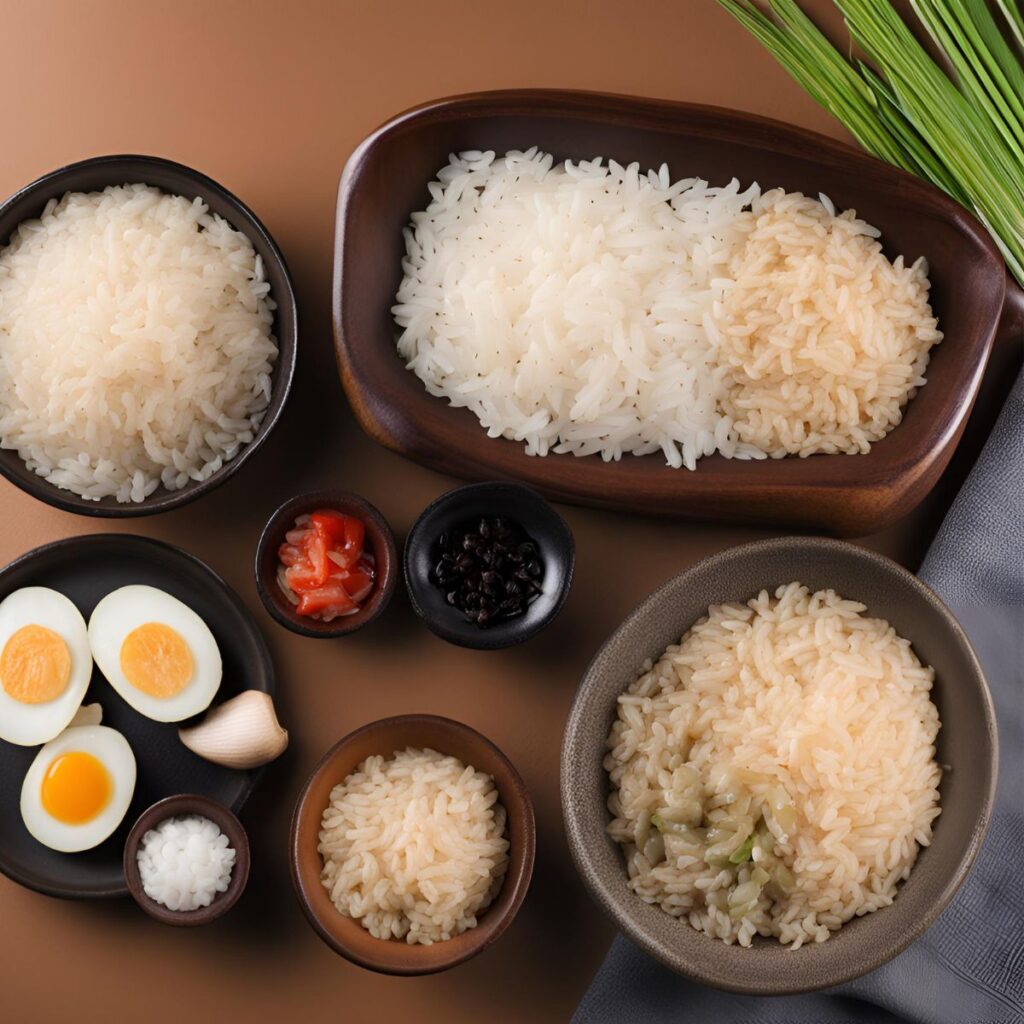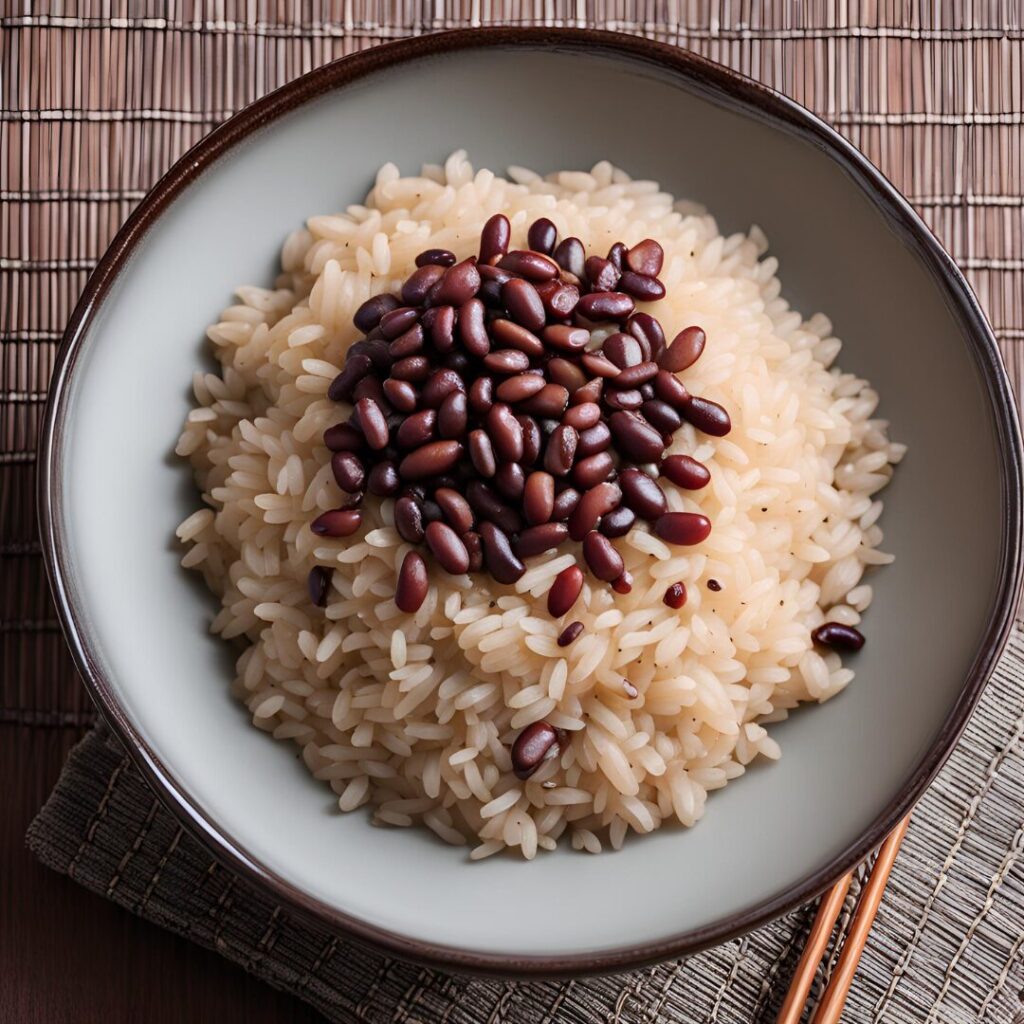Introduction
Genmai Sekihan, or brown rice sekihan, is a dish that speaks to the heart of Japanese celebrations. Traditionally made with white rice and adzuki beans, this version uses genmai (brown rice) for a healthier twist. Its origins trace back to ancient Japan, where red-colored dishes like sekihan were served on auspicious occasions due to the color red being associated with happiness and warding off evil spirits. My personal connection with this dish is one of nostalgia, as it reminds me of New Year’s celebrations with my family, where each bite was a taste of the new beginnings and joy.


Cultural Context
Sekihan is a ceremonial dish in Japan, often served during festive events such as birthdays, weddings, and holidays like New Year’s and Girls’ Day. It symbolizes good fortune and is a staple at celebratory feasts. The use of genmai in sekihan is a modern adaptation, reflecting today’s health-conscious trends while maintaining the dish’s cultural essence.
Ingredient Spotlight
The key ingredients in Genmai Sekihan are:
- Genmai: Nuttier and chewier than white rice, it retains the bran and germ, offering more nutrients.
- Adzuki beans: These small red beans are sweet and earthy, providing a beautiful contrast both in flavor and color.
- Salt: A pinch of salt is crucial to enhance the natural flavors of the rice and beans.
- Modern variations sometimes include black sesame seeds or chestnuts for added texture and flavor.
Health Benefits of Genmai Sekihan
Genmai is rich in fiber, vitamins, and minerals like magnesium and selenium. Adzuki beans add protein and antioxidants. Together, they create a dish that’s not only satisfying but also beneficial for digestive health and overall well-being.


Ingredients
- 2 cups brown rice, short grain
- ¼ -½ cup dried azuki beans
- ½ tsp salt
For serving – gomashio (50/50 blend of toasted crushed black sesame seeds and salt)
Instructions
- First use a small pot filled with water and bring to a boil. Add the azuki beans and cook in boiling water for about 25-30 minutes.
- Meanwhile, rinse the brown rice and drain thoroughly, add to your rice maker along with salt.
- Once beans are done, strain and reserve the liquid.
- Next add all of the bean liquid to the rice maker and top off with additional water until at the 2 cup marker.
- Last add in the azuki beans and cook. Do not stir or the rice may not cook evenly.
- Once the rice is done cooking, gently fold so the beans are evenly mixed
- Serve topped with some gomashio and enjoy!
Cooking Tips
- To avoid mushy beans in your rice, it’s important you check for doneness. I usually check around the 25-30 minute mark. Take a bean out and squeeze it, it should break apart easily without too much force. It’s going to continue cooking in the rice maker so it doesn’t need to be completely soft just after boiling.
- If you’re sensitive to the bitterness of azuki beans, 3 things you can do to minimize it are:
- Parboil the beans once and discard the liquid.
- Skim off the aku (white foam that floats on the surface while the beans are cooking)
- Add a little bit more salt, ¼ to ½ tsps worth, note that you might not want to put too much gomashio if you add additional salt.
- If you enjoy sekihan, it freezes well, so you can make extra for leftovers at a future date!
Serving Suggestions
Serve Genmai Sekihan with goma shio (sesame salt) or umeboshi (pickled plum) for a traditional touch. For a modern twist, pair it with a side of grilled salmon or a green salad.
Variations
Customize your Genmai Sekihan by:
- Mixing in mushrooms for an umami boost.
- Adding matcha powder for a unique flavor and color.
- Topping with furikake for extra seasoning.
Conclusion
Genmai Sekihan is a dish that bridges the past and present, offering a taste of tradition with a nod to modern healthfulness. I invite you to try this recipe, share your experiences, and suggest any variations you love. Let’s celebrate life’s moments, big and small, with this wholesome dish.





Konnichiwa! (Hello!) I'm Pat Tokuyama, a Japanese tofu cookbook author, who travels for music, food, and adventure. If you like Japanese tea, checkout some of the newestorganic japanese tea, matcha bowls and noren and more!
** Curious about the Plant Based Japanese Cooking Club? ** Learn more here!